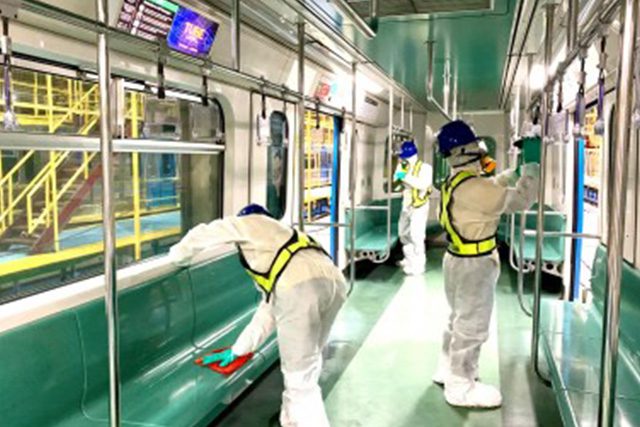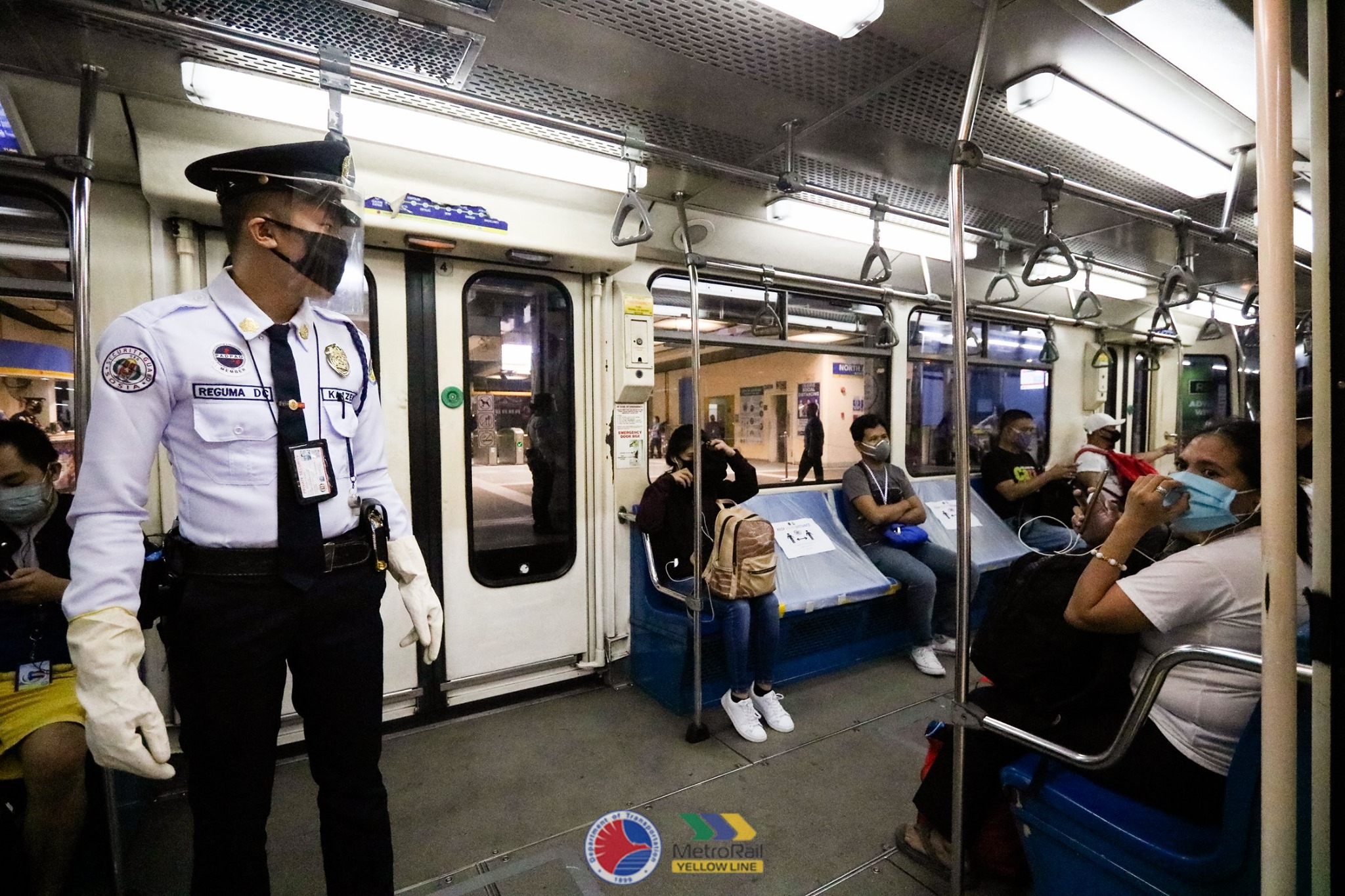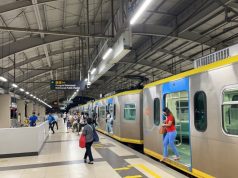
The Light Rail Transit-Line 1 offered visual cues for its commuters that they can use to practice physical distancing measures while traveling amid the COVID-19 pandemic as the metro shifted to general community quarantine.
Safety markings bearing the sign of “x” were placed on train seats and platforms to supposedly guide the public on where to sit and stand so they would not be able to violate the guidelines imposed by the health department.
Filipinos are supposed to stay away from each other for at least one meter, which is nearly equivalent to a motorcycle’s length. This applies to public settings and places outside of residence.
The LRT-1 management said that commuters can only occupy train seats and spaces that have the “x” mark.
“Tumayo at umupo lamang sa mga nilagyan ng ‘X’ na marka o panatilihin ang one-seat apart na distansya sa loob ng tren. Sundin naman ang mga puting marka sa istasyon at laging panatilihin ang isang metrong distansya sa bawat isa,” part of its reminders said.
X marks the spot?
When it was implemented, however, some commuters observed how the visual cues failed to guide passengers.
A Twitter user shared screengrabs of commuters who were shamed for not following LRT-1’s markers for physical distancing.
One picture showed a man who did not sit on the marked seat in the train while another picture featured commuters waiting on the platform who did not stand on the designated markers.
The "wala kayong disiplina" crowd is blaming these people for not following instructions, BUT the real problem is bad design. Sino ba kasing nag-isip na X ang sign for "pwedeng umupo/tumayo dito"? pic.twitter.com/j0M8Zdb005
— Lucas (@bashgita) June 2, 2020
Another online user replied to his post and said that there were officers who instructed the passengers to stand on the “x” marks.
“However, on my way home (from Central Station), there were no officers in the platform and people (whom I assume were unaware of the X sign) aren’t on the X sign,” the Twitter user added.
“The problem I saw is that they LACK PSA (public service announcement) to INFORM THE PEOPLE TO STOOD ON THE X SIGN. I barely see any PSA on the platform about it. I saw some, but it’s about social distancing, temperature, etc.,” the online user continued and then tagged the official account of LRT-1.
LRT-1 eventually responded and said that they have placed posters, “reminded on social media” and had train operators and station personnel remind commuters through spiels and announcements.
The online user who tagged the LRT-1 was not satisfied with the management’s answer and claimed that the poster could be “too small” or “too long to read.”
“Not everyone has an easy access to social media either. The one I saw not sitting on the x sign while on my way to Central station was using keypad phone,” the online user said.
Another Twitter user argued that the management of LRT-1 should employ “legible displays, avoid only knowledge-based data” and “minimize time and effort for finding information.”
“Efficiency decreases when too much time and effort is spent searching for relevant information. Look how small that is (the marker). It’s not even that illuminated with natural light,” the online user observed.
“The visual cue should support an appropriate check mark (not an x mark), appropriate illumination, sufficiently large text/sign, a clear font and the correct viewing angle,” the user continued.
The Twitter user added that such visual cues “must be reinforced or emphasized” such as increasing it and centralizing its display placement.
An academic suggested that people tend to associate the “x” symbol with anything “dangerous” or “wrong.”
Jeff Arapoc juxtaposed the LRT design with Australia’s check mark on its seats.
There is a saying in #Nudgetheory that a visual cue is worth a thousand instructions. However, it is very important for us to consider how a typical human mind works. Pagnakakakita ka ba ng 'X', ano una mong naiisip? Dangerous? Wrong?
Kaya naman, stop blaiming the commuters! pic.twitter.com/19aLtqTZ8w
— Jeff Arapoc (@jaarapoc) June 3, 2020
His thoughts were echoed by other Filipinos who claimed that people tend to associate the “x” symbol with “something forbidden.”
“Bad design. People has the tendency to associate ‘X’ as something forbidden kaya iniiwasan nila, akala siguro nila bawal dun,” a Facebook user said.
“Kung bilog or something that does not give negative connotations. Subconsciously, e di uupo sila doon,” another online user wrote.
Visual cues are used to regulate and enforce physical distancing measures so that there would be considerable space to prevent transmission of COVID-19.
In the Metro Rail Transit-Line 3, the “x” marks are used to indicate the seats that cannot be occupied by the commuter. There are also barriers placed on the seats that cannot be occupied to further guide them.

In other places like Baguio, bright circular marks with footprint symbols were painted in a pathway to public market to indicate the places where people can stand and queue.
The initiative previously went viral and was praised online since it effectively guided the public.









